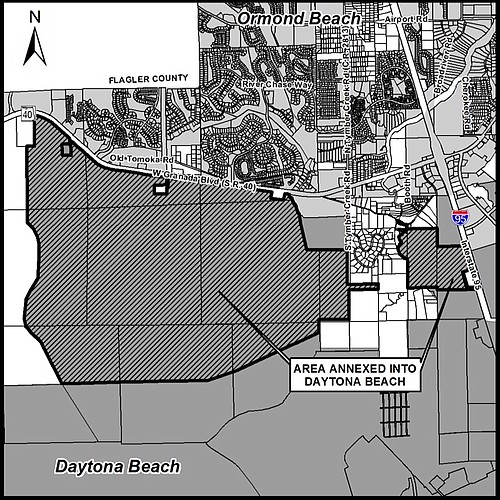- April 18, 2024
-
-
Loading

Loading

Many individuals I have talked to recently are quite surprised to learn that the property west of Riverbend Church on the South side of Granada Boulevard all the way out to the Tiger Bay State Forest is in the city of Daytona Beach. As you exit Breakaway Trails, waiting to turn on Granada, the 3,072 acres of open land that you see in front of you is Daytona Beach. Many of the thousands of homes that will be built there may have an Ormond Beach address, but Ormond Beach will have no regulatory control over the development that occurs there.
Here’s what happened. On March 6, 2002, the landowner, Consolidated Tomoka Land Co., after years of negotiations with Ormond Beach had the unincorporated property described above annexed into Daytona Beach. The Ormond Beach City Commission had refused to change the city's wetland regulations and allow the higher density (more new homes) that CTLC was seeking. It was a victory of sorts for the anti-sprawl residents and commissioners who supported it at the time.
The problem is that this so-called victory came with a very significant cost. The land is currently being developed in Daytona Beach, but the growth impacts will principally affect Ormond Beach. There will be heavy impacts to Ormond Beach without the requisite regulatory authority or revenues to mitigate or control the long-term consequences.
In the next 10-15 years, there are 5,500 new homes planned (some estimate as many as 9,400) on the property west of Interstate 95 between LPGA and Granada. The effect of the decisions made in 2002 has put current city officials and residents in the difficult position of seeing impacts of future growth mounting on our borders and having little ability to control or mitigate it.
It doesn’t mean we won’t try. As I write this, your City Commission is working on plans to improve traffic capacity on Granada west of 95 and seeking the best alternate east/west relief route for our city’s main thoroughfare.
Also, our staff is working with the Florida Department of Transportation to implement a computer-assisted traffic flow management system on Granada that is scheduled to be up and running by 2019.
Looking forward, I’m hopeful we can use this situation to learn a lesson when it comes to future planning decisions. It would be prudent to adopt policies and negotiation strategies that limit growth impacts while providing the ability to control and mitigate them.
Bill Partington is the mayor of Ormond Beach.